Know Coffee Flavor Wheel! How many kinds of coffee do you smell?
Professional coffee knowledge exchange more coffee bean information please follow the coffee workshop (Wechat official account cafe_style)
Have you ever heard of coffee flavor wheel? The revision of the new edition of the Coffee Flavor Wheel (Coffee Taster's Flavor Wheel) designed by the American boutique Coffee Association (referred to as "SCAA") completely refers to the World Dictionary of Coffee sensory Research (The World Coffee Research Sensory Lexicon). This masterpiece brings together dozens of experts and scholars from different fields such as sensory science, coffee procurement and coffee roasting.
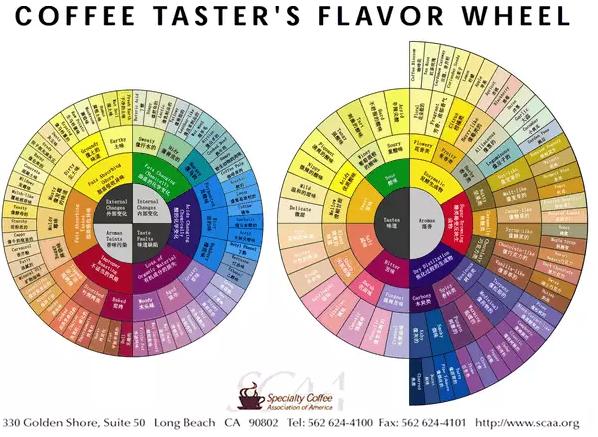
The Coffee Flavor Wheel developed by SCAA was first updated in early 2016 and is the revised version in 21 years. With the coordinated guidance of SCAA and the cooperation of the World Coffee Research Association (WCR), experts updated and adjusted the Flavor Wheel for the first time. This is the largest special study on coffee taste in human history, and the taste types and technical terms covered by "Flavor Wheel" have been effectively supplemented. SCAA and the University of California, Davis, also gathered sensory scientists and coffee industry experts to put the words together. This new "flavor wheel" will completely subvert the overall development of the coffee industry and the application of coffee taste.
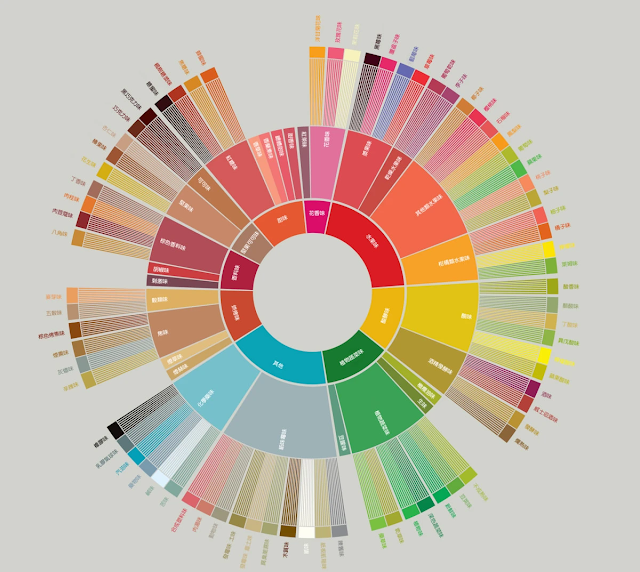
This flavor wheel defines the flavor of coffee in terms of "one flavor with five flavors".
Coffee flavor round [one aroma]-"aroma Aroma"
Aroma, including Fragrance and Aroma, refers to the taste of brewed coffee, most obviously when the beans have just been ground. Used to describe the smell of coffee including fruity, floral, fruity, woody, nutty, bacon (smoked), caramel, cocoa. Wait.
Coffee Flavor Wheel [five flavors]-"taste Tastes"
The five flavors are sour, sweet, salty, bitter and fresh. Scientists found that there are delicious receptor proteins on the taste buds and modified the "five flavors" to "sour, sweet, bitter, salty and fresh". Although "astringent" was once regarded as a sense of taste, "astringent" is actually a sense of friction and convergence caused by the combination of some special molecules (such as tannins) with proteins on the tongue, so it is not considered to be a member of the sense of taste.
In the central area of the flavor wheel is the "taste Tastes" and then circle the outside to find 99 descriptions of "flavor Flavors". The flavor wheel is divided into nine categories (sweetness, flower aroma, fruit aroma, etc.), using many complex graphics, and each category extends more second and third layers of words to describe a particular flavor.
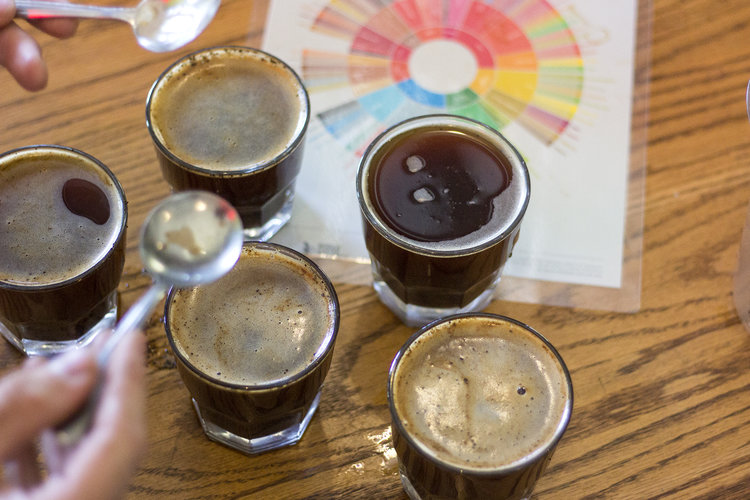
The source of thousands of fragrance and ten thousand flavors of coffee-[three sources, nine flavors]
The roasting of coffee is the source of thousands of fragrances of coffee.
Coffee roasting is the soul of coffee beans, which can determine the flavor, mellowness and acidity of coffee beans, while the flavor of coffee depends on the comprehensive performance of temperature and time, that is, the chemical changes of roasting.
The source of coffee aroma is divided into three categories:
1. Fermentation catalysis of shallow baking
two。 Mena reaction baked in medium
3. Dry distillation of deep baking
[three major sources]
# shallow roasted coffee beans:
Enzymatic (enzymatic, floral, fruity, herbaceous)
# roasted coffee beans:
Mena acts with caramel (sugar browning, nuts, caramel, cocoa)
# Deep roasted coffee beans:
Dry distillation (dry distillation, resin, spices, carbon incense)
[nine flavors] can be divided into:
1) Flower fragrance
2) fruits
3) sour / fermented
4) Green / vegetable type
5) baked
6) spice type
7) Nuts / cocoa
8) Sweet
9) other
. Nine categories, etc.

"smell bottle-36 flavor" wine nose is a kind of wine tasting tool from France and a specimen of wine aroma. It was born in the innovation period of French wine tasting and wine appreciation culture in 1980 and has a history of 25 years. French Jean Lenoir Jean Renova is the inventor of this tool, he named the tool Le Nez du Vin ("wine nose"). Jean Lenoir is a figure who has far-reaching influence and made great contribution to the wine industry in the world.
In order to train cup testers to remember specific flavors, the current SCAA certification course has identified 36 Le Nez du Cafe (literally translated as coffee nose) made by "EditionJean Lenoir France" as an important part of the Q grader certificate. It is also a fragrant bottle with coffee tone, providing training or collection. Flavor is divided into four groups (Enzymatic enzymatic group / Sugar Browning caramel group / Dry Distillation dry distillation group / Aromatic Taint defect group) to provide a complete analysis of the different flavors of coffee in the roasting process.
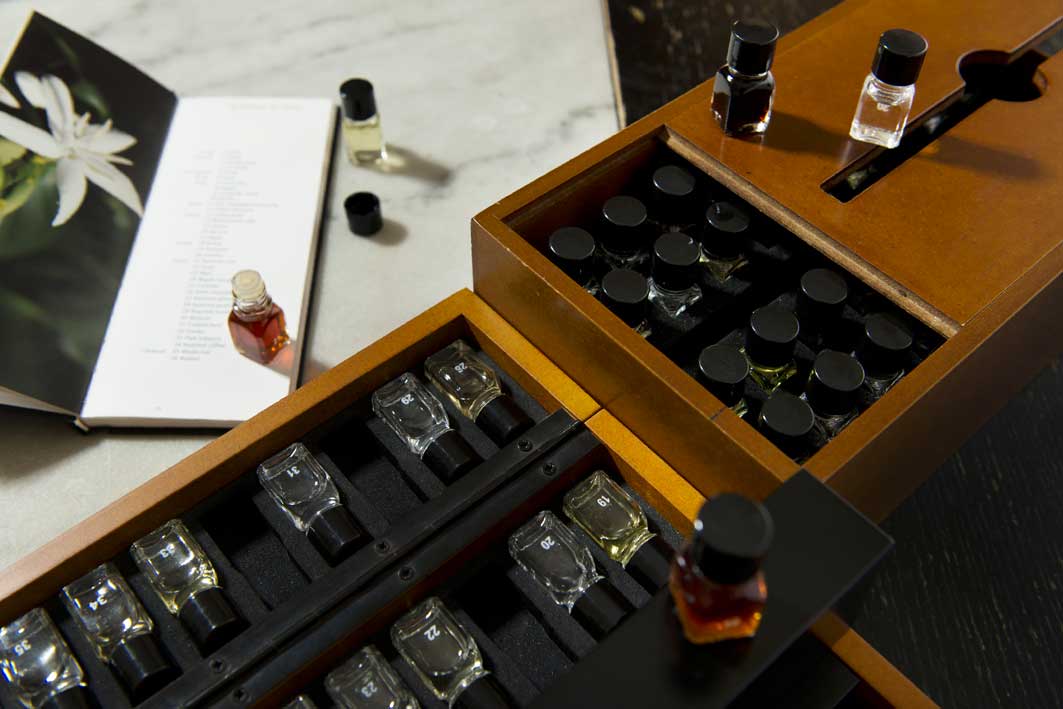
Le nez du caf é Coffee nose 36 bottles of coffee smell bottles are:
1. Earthy flavor, 2. Potato, 3. Green beans, 4. Cucumber, 5. Straw, 6. Western fir, 7. Cloves, 8. Pepper, 9. Coriander seeds, 10. Vanilla, 11. The scent of roses, 12. Coffee flowers, 13. Coffee pulp peel, 14. Blackcurrant, 15. Yellow lemon, 16. Apricot, 17. Apple, 18. Cream, 19. Honey, 20. Leather, 21. Indian rice, 22. Toast, 23. Mai Xiang, 24. Maple syrup, 25. Caramel, 26. Dark Chocolate, 27. Roasted almonds, 28. Roasted peanuts, 29. Roasted hazelnut, 30. Walnut, 31. Boiled beef, 32. Smoky, 33. Cut tobacco, 34. Roasted coffee beans, 35. The taste of potion, 36. Rubber smell
In response to the revised version of "Flavor Wheel" 100Flavor T100 COFFEE FLAVOR MAP (Coffee Flavor Map) is another "scent bottle" produced by Scentone in Korea with 100 different flavors, providing complete coffee knowledge training.
T100 COFFEE FLAVOR MAP (Coffee Flavor Map) is developed in South Korea and is certified by SCAA to better train your senses.
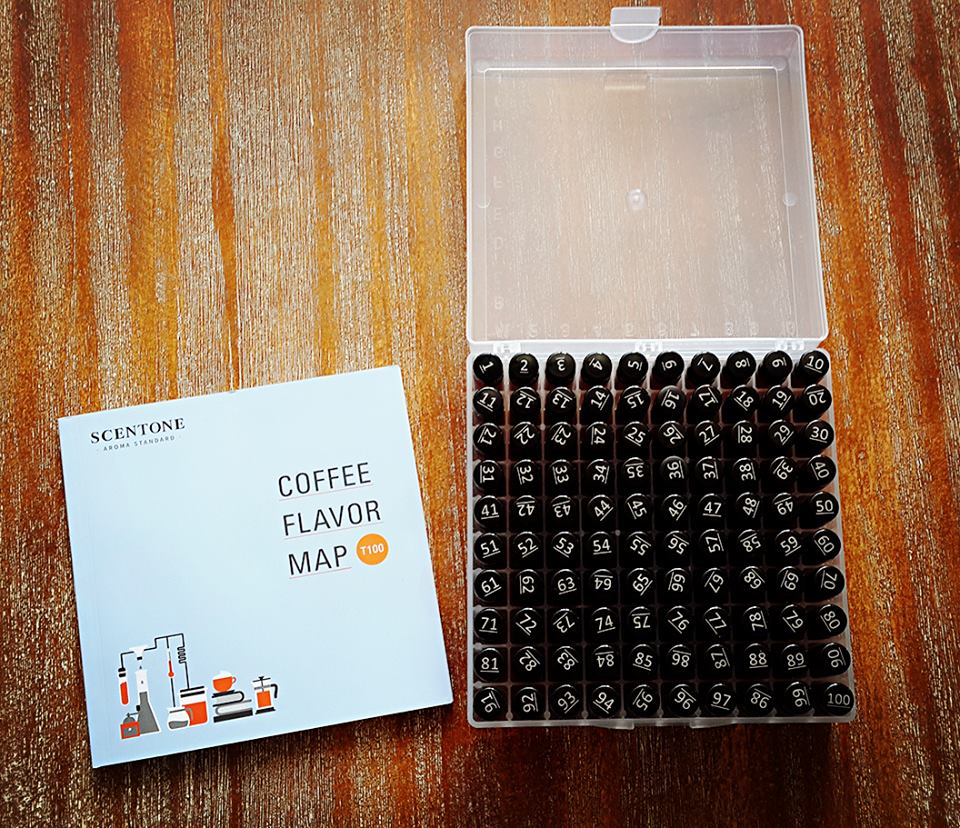
100 flavors, what are the differences? Different from the four groups of traditional perfume bottles, T100 is divided into ten different fragrance groups:
TROPICAL FRUIT (tropical fruits)
BERRY-LIKE (berries)
CITRUS&OTHERFRUITS (citrus and other fruits)
STONE FRUIT (drupe)
CEREAL&NUT (cereals and nuts)
CARAMEL&CHOCOLATE (caramel and chocolate)
HERB&FLOWER (herbs and flowers)
SPICE (spices)
VEGETABLE (vegetables)
SAVORY&OTHERS (salty and other kinds)
1. Guava guava 2, mangosteen mangosteen 3, mango mango 4, banana banana 5, coconut coconut 6, passion fruit passionfruit 7, watermelon watermelon 8, papaya papaya 9, tropical fruit tropical fruit 10, pineapple pineapple 11, cantaloupe melon 12, pomegranate pomegranate 13, litchi lychee 14, aloe aloe 15, strawberry strawberry 16, blueberry blueberry 17, raspberry raspberry 18, cranberry cranberry 19, BlackBerry blackberry 20, West Indian cherry acerola 21, Brazilian berry acai berry 22, blackcurrant blackcurrant 23, blackcurrant blackcurrant 23. White grape white grape 24, musk grape muscat 25, grape grape 26, lemon lemon 27, orange orange 28, lime lime 29, grapefruit citron (yuja) 30, grapefruit grapefruit 31, pear cheinese pear 32, apple apple 33, wooden pear Chinese quince 34, cherry cherry 35, black cherry dark cherry 36, peach peach 37, plum plum 38, apricot apricot 39, red jujube jujube 40, hazelnut hazelnut 41, walnut walnut 42, pine nut pine nut 43, almond almond 44, peanut peanut 45, Pistachio pistachio nut 46, sesame sesame 47, red bean red bean 48, malt malt 49, pot scorched rice 50, roasted coffee bean roasted coffee bean 51, caramel caramel 52, brown sugar brown sugar 53, honey honey 54, maple syrup maple syrup 55, milk chocolate milk chocolate 56, dark chocolate dark chocolate 57, mocha mocha 58, cream cream 59, butter butter 60, yogurt yogurt 61, cheddar cheese cheddar cheese 62, pine pine 63, Hawthorn crataegus 64, basil basil 65, thyme thyme 66, Earl black tea carl grey 67, rose rose 68, jasmine jasmine 69, sophora acacia 70, elderflower elder flower 71, lavender lavender 72, bergamot bergamor 73, chrysanthemum chrysanthemum 74, hibiscus hibiscus 75, eucalyptus eucalyptus 76, cinnamon cinnamon 77, vanilla vanilla 78, nutmeg nutmeg 79, clove clove 80, cardamom cardamom 81, star anise 82, cumin cumin 83, black pepper black pepper 84, garlic garlic 85, ginger ginger 86, soy sauce soy sauce 87, mustard mustard 88, mayonnaise mayonnaise 89, Pumpkin pumpkin 90, tomato tomato 91, cucumber cucumber 92, mushroom mushroom 93, taro taro 94, kudzu 95, ginseng ginseng 96, sweet pepper paprika 97, musk musk 98, amber amber 99, tobacco smoke 100, roast beef savory beef
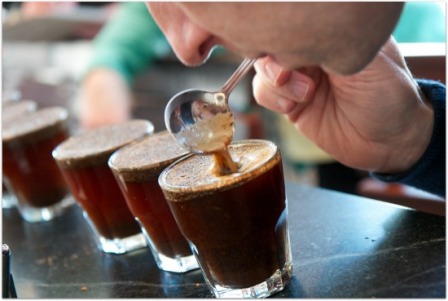
How to master and master the basic taste?
When you can't fully distinguish the basic flavors such as sweet, sour, bitter, salty and fresh, it's hard to tell the difference between lemon and grapefruit hidden in coffee. In the SCA sensory fundamentals course, it is recommended that you try the following ways to train your recognition of basic smells:
Dissolve 24g sucrose in Tian-1L water
1.2g citric acid dissolved in acid-1L water
4G sodium chloride (table salt) dissolved in salty-1L water
0.54 g caffeine is dissolved in bitter-1L water.
2g monosodium glutamate dissolved in fresh-1L water
Practice different levels and intensities
There are many different types of sour, sweet, salty and bitter in coffee, each of which brings a different taste experience. Being able to identify and describe different kinds of strengths and weaknesses will help to further understand and appreciate coffee. The feeling when this intensity acts on the tongue. Taste five cups separately and make a comparison. Finally, take a blind test to see if you can identify different levels.
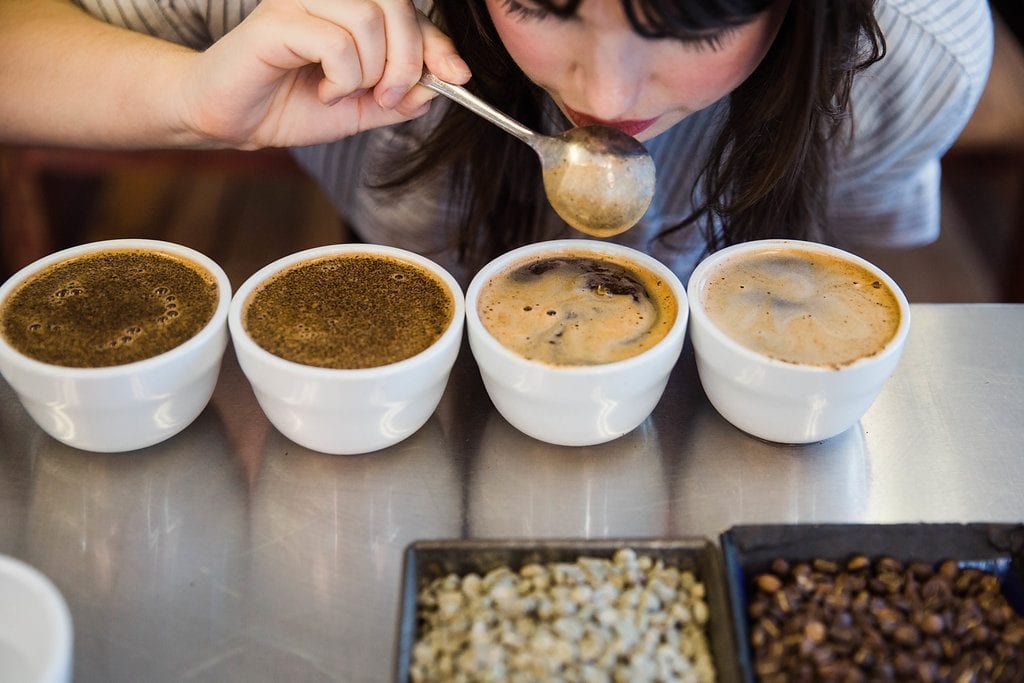
Triangular cup test
The final suggestion is to take a triangular cup test-one of the best ways to train and evaluate taste buds. Moreover, the difficulty level of the triangle cup test is easy to adjust, which helps to improve it.
In the triangle cup test, three cups are required to be marked A, B and C respectively. Two of them use the same kind of coffee, and the other cup put different coffee. What you need to do is to find out which one of the three cups of coffee is different from the other two.
The higher the similarity of coffee, the more difficult the exercise will be. You can choose different producing areas, different treatment methods, different baking degrees, or even different batches on the same farm to practice. I have to say, this process is very interesting!
How delicious the coffee is! How many kinds have you had in it?
END
Important Notice :
前街咖啡 FrontStreet Coffee has moved to new addredd:
FrontStreet Coffee Address: 315,Donghua East Road,GuangZhou
Tel:020 38364473
- Prev
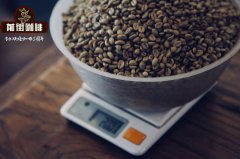
A brief analysis of the common coffee bean treatment methods the differences between coffee bean treatment methods and their advantages and disadvantages
Professional coffee knowledge exchange more coffee bean information please follow the coffee workshop (Wechat official account cafe_style) how coffee is made, several common coffee raw bean treatment methods are well known, there are many ways to treat coffee beans, but do you know the difference between these treatments? Some of the most common treatments, the sun treatment, will first turn the mature or semi-mature
- Next
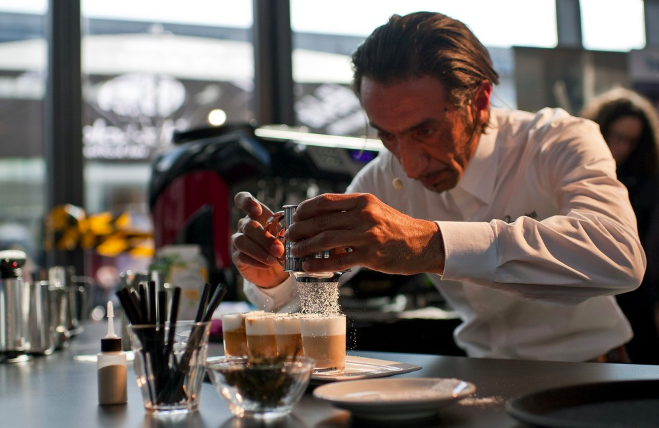
Why do Norwegian people love coffee so much? Because: drink coffee can go to heaven!
Professional coffee knowledge exchange more coffee bean information Please follow the coffee workshop (Wechat official account cafe_style) many people think that Italy is the hometown of espresso (Espresso), Norway is not the hometown of coffee, but the goal of the coffee-loving Norwegian is to tell everyone how to make the best coffee in the world. You can't wake up without coffee if you go.
Related
- How did the Salvadoran coffee industry develop in Central America?
- What exactly does the golden cup extraction of coffee mean?
- The Origin of Coffee flower
- [2023 Starbucks World Earth Day] there are more meaningful things besides free Starbucks coffee!
- What kind of coffee is there in Spain? 9 Flavors of Spanish Coffee
- Aromatic African coffee| Kenya's coffee culture and historical production area
- Liberica Coffee Bean knowledge: the characteristics of Liberian Coffee beans of the three original species of Coffee beans
- The origin and formula of Spanish latte introduces the taste characteristics of Bombon coffee in Valencia, Spain.
- How to adjust the solution of over-extracted coffee
- What is the tasting period of coffee beans? What is the period of coffee and beans? How should coffee wake up and raise beans?

